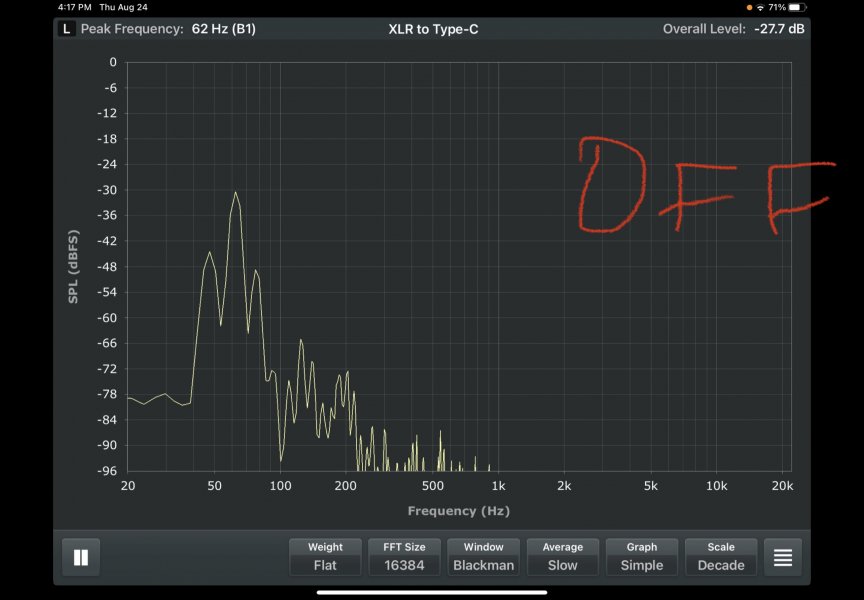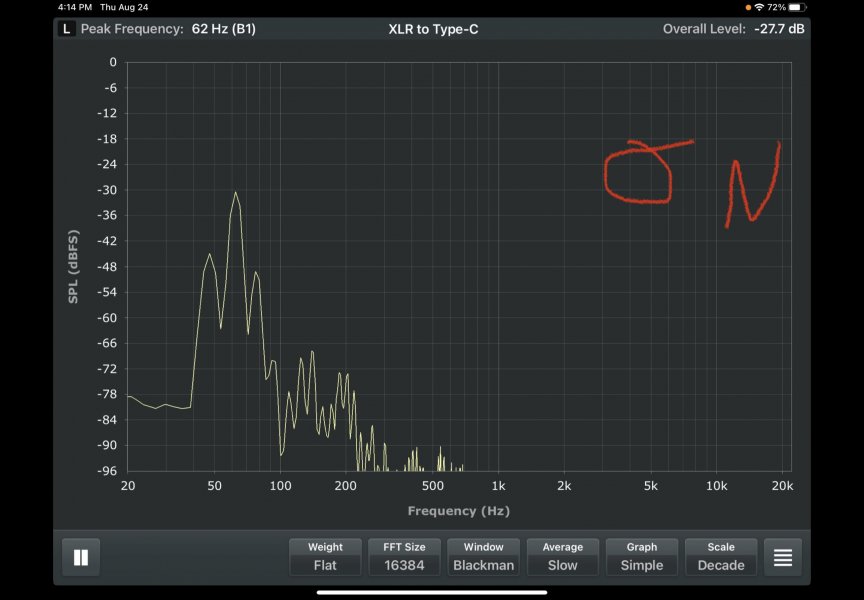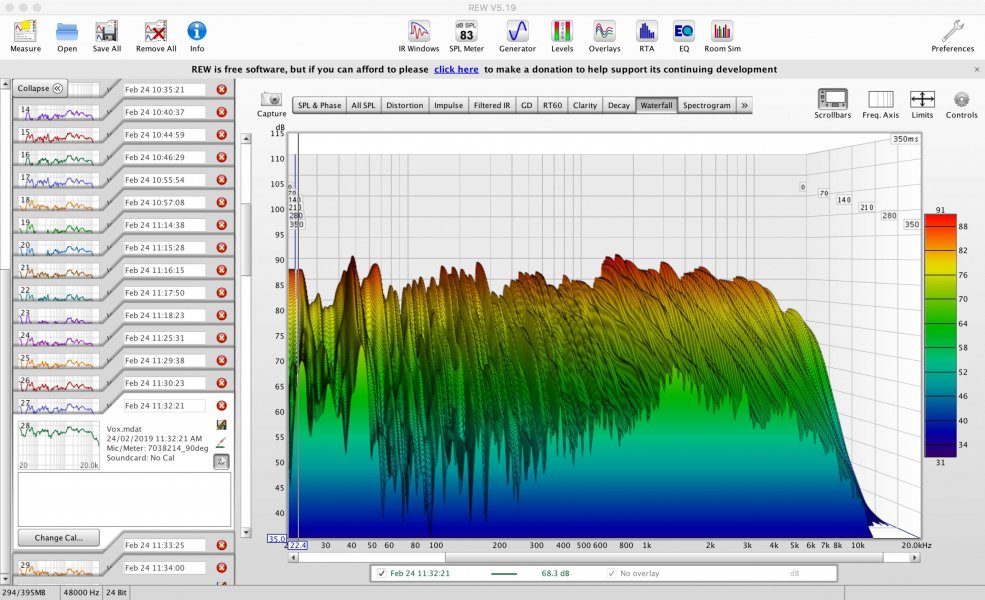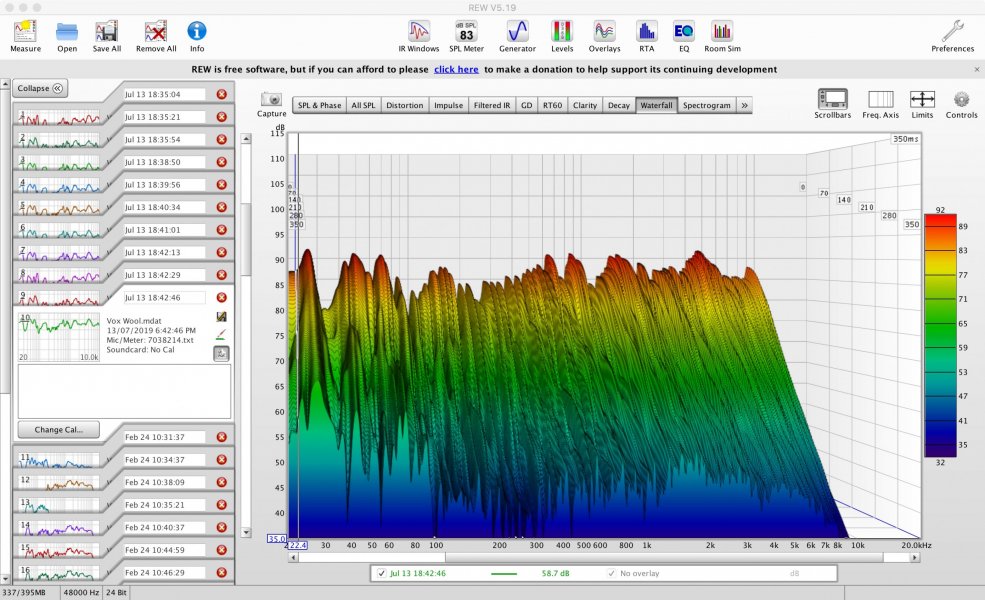I am no techie...but I wonder if what people are hearing without your AVAAs is purely decibels. Is it overhang, thickness, something else which is not purely about decibels? And is the AVAA only about decibels? They certainly talk about reducing decibels...but I wonder if they do anything else in technical terms which assists in intelligibility of that frequency range.I think that everybody who has visited my listening room hears the improvement in the room modes occasioned by the AVAA active bass absorbers.
A couple of days ago I got around to doing a formal test to see the observable measurable difference in room boom peaks at 45Hz and at 60Hz with the three AVAAs on versus the three AVAAs off.
Using my pro audio Earthworks QTC-4 on a stand at exactly the ears' listening position, broadband pink noise and a test tone at 63Hz to the real time analyzer on my iPad, there was no observable, measurable difference in attenuation of room modes whether the AVAAs were on or off. This is a anomalous result I do not understand.
I have a lot of trouble believing approximately 15 people psychosomatically subjectively heard mitigation of the room boom, and we all were deluding ourselves.
I think I am using the same frequency response measurement protocol I have always used. I can't figure out why I'm not seeing a measureable difference.
Also, I have no idea how sensitive your db reader is, but i can tell you from experience having listened to the old X1/Grand SLAMMS before finetuning, the treble had been set up 2db higher by previous owner in their room, and it was so piercing that I actually told the dealer when I heard them in the store after they arrived that if that was how they were going to sound in our home, NOT to even bother bringing them to the house. It was so piercing, I did not want 4 guys to unload the whole thing just to know I was sending them back.
He assured me it would be perfect...and after reducing 2db in-situ during setup, it was sublime by comparison. We are more sensitive to treble than bass, but again not sure if you are sure the measurements are within less than 1db between with and without AVAA? Unless the room was significantly louder in bass without than with.





